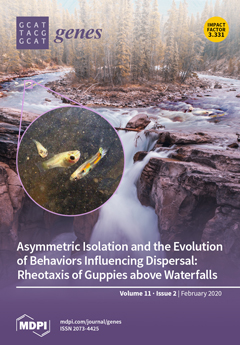POTE (prostate, ovary, testis, and placenta expressed) genes belong to a primate-specific gene family expressed in prostate, ovary, and testis as well as in several cancers including breast, prostate, and lung cancers. Due to their tumor-specific expression,
POTEs are potential oncogenes, therapeutic targets,
[...] Read more.
POTE (prostate, ovary, testis, and placenta expressed) genes belong to a primate-specific gene family expressed in prostate, ovary, and testis as well as in several cancers including breast, prostate, and lung cancers. Due to their tumor-specific expression,
POTEs are potential oncogenes, therapeutic targets, and biomarkers for these malignancies. This gene family maps within human and primate segmental duplications with a copy number ranging from two to 14 in different species. Due to the high sequence identity among the gene copies, specific efforts are needed to assemble these loci in order to correctly define the organization and evolution of the gene family. Using single-molecule, real-time (SMRT) sequencing, in silico analyses, and molecular cytogenetics, we characterized the structure, copy number, and chromosomal distribution of the
POTE genes, as well as their expression in normal and disease tissues, and provided a comparative analysis of the
POTE organization and gene structure in primate genomes. We were able, for the first time, to de novo sequence and assemble a
POTE tandem duplication in marmoset that is misassembled and collapsed in the reference genome, thus revealing the presence of a second
POTE copy. Taken together, our findings provide comprehensive insights into the evolutionary dynamics of the primate-specific
POTE gene family, involving gene duplications, deletions, and long interspersed nuclear element (LINE) transpositions to explain the actual repertoire of these genes in human and primate genomes.
Full article






